

Published 05/04/2023
Decarbonising transport
Since 2013, according to DVLA data, on average 42 electric vehicles (EVs) have come into Orkney per year.
Following the launch of ReFLEX Orkney's leasing service, there was a big spike with 194 EVs being brought into Orkney, more than tripling the numbers in Orkney in just a two year period.
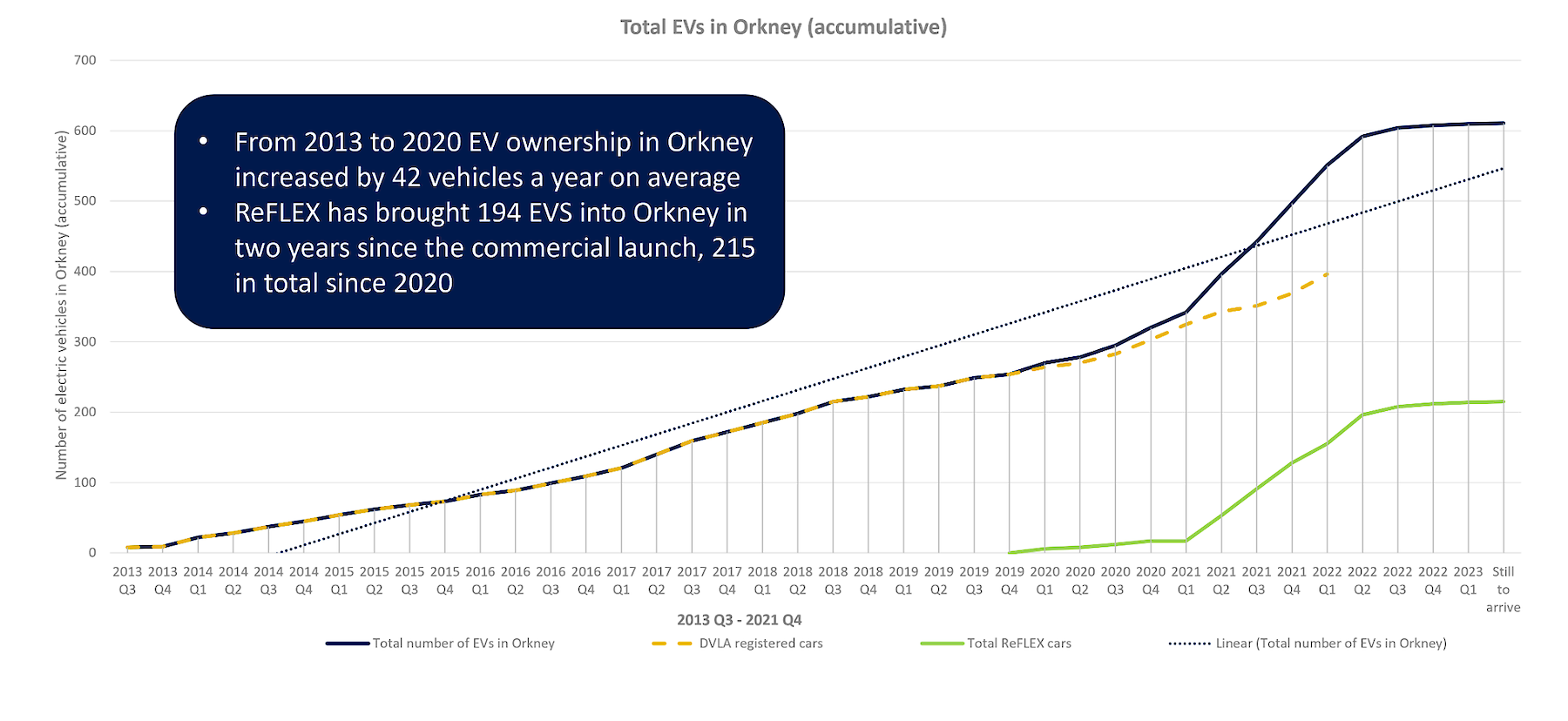
Telematics
Geotab telematic units were fitted to onboard diagnostics (OBD) ports in EVs to collect data. The purpose of collecting this data was to allow us to understand the performance of the EVs and consider carbon reduction calculations (giving us insight into the energy and mileage). It also helps with the wider integration of vehicles in the wider energy system, helping us understand the state of charge (e.g. battery capacity) in the vehicles so lets us know when charging is required.
We endeavoured to track most models (>80%) however it was not feasible/practical to access OBD port on some vehicles.
The data presented below was collected by between May 2021 and March 2023. It's important to stress that all data is for Orkney so seasonal impact in other locations may vary.
What we've learned so far
Make and model
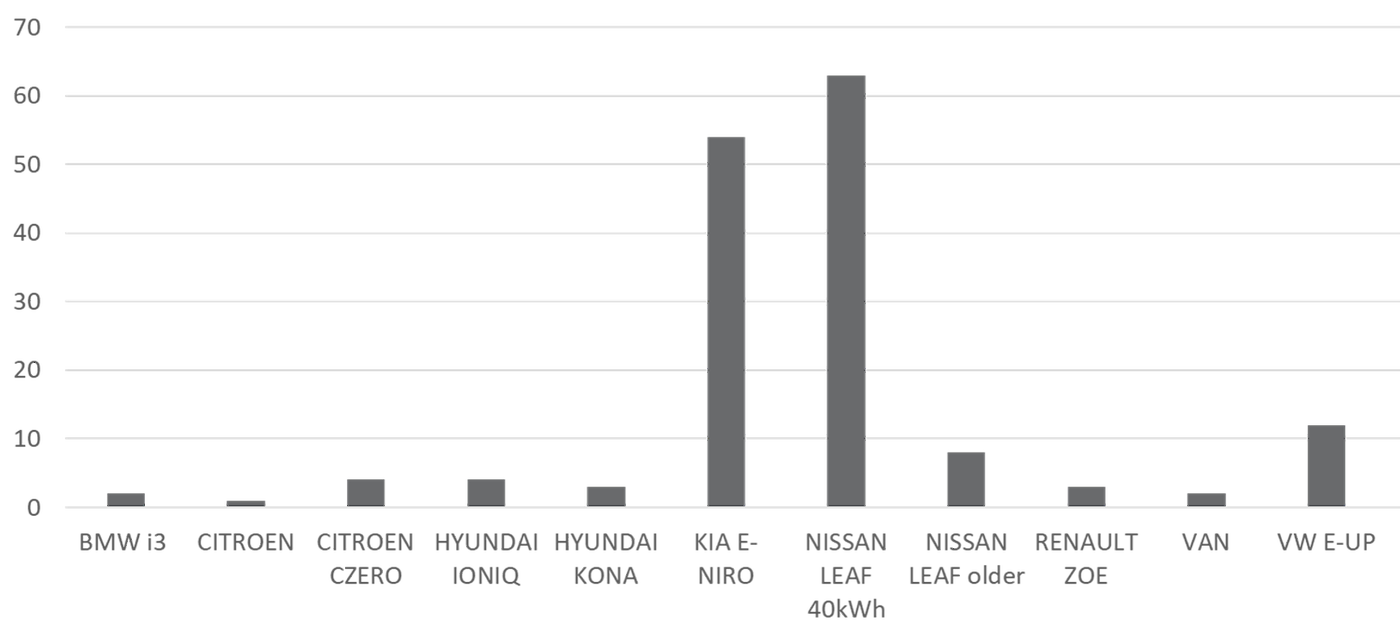
This graph shows the ReFLEX Orkney fleet that have had telematics installed. The two most popular vehicles being leased in the period were the Kia e-Niro and the Nissan Leaf 40 kWh. So there are the two types of vehicles where we have received the most data from.
Average distance per week
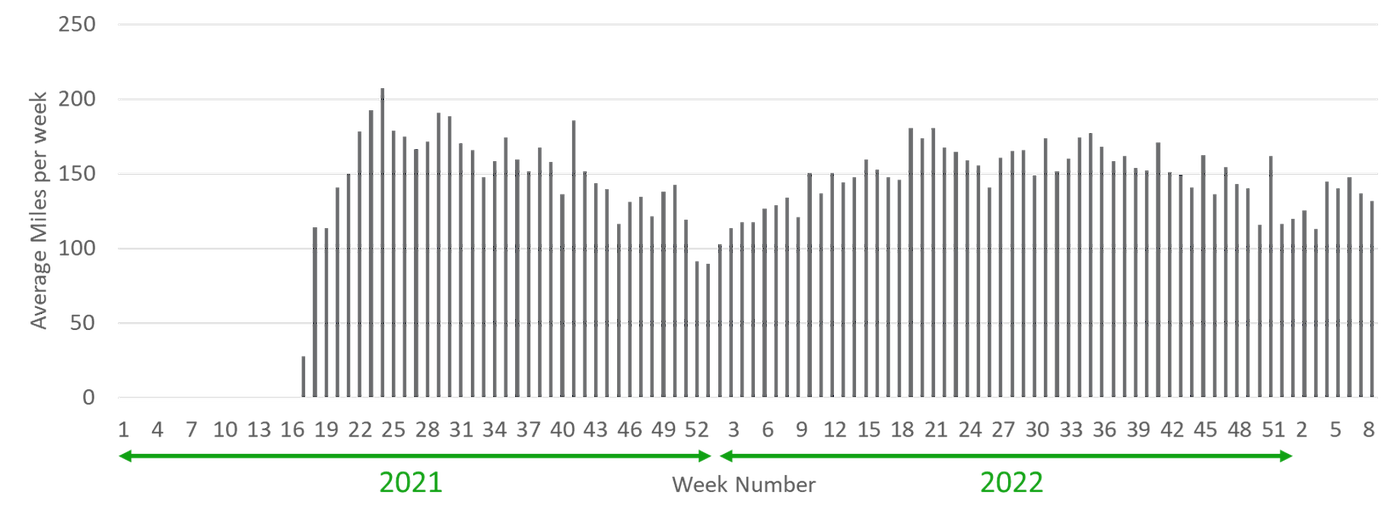
This charts the average distance per week by the ReFLEX fleet of vehicles.
Average is around 150 miles per week; that's around 7,500-8,000 miles per year across the whole fleet of vehicles.
Average efficiency per month
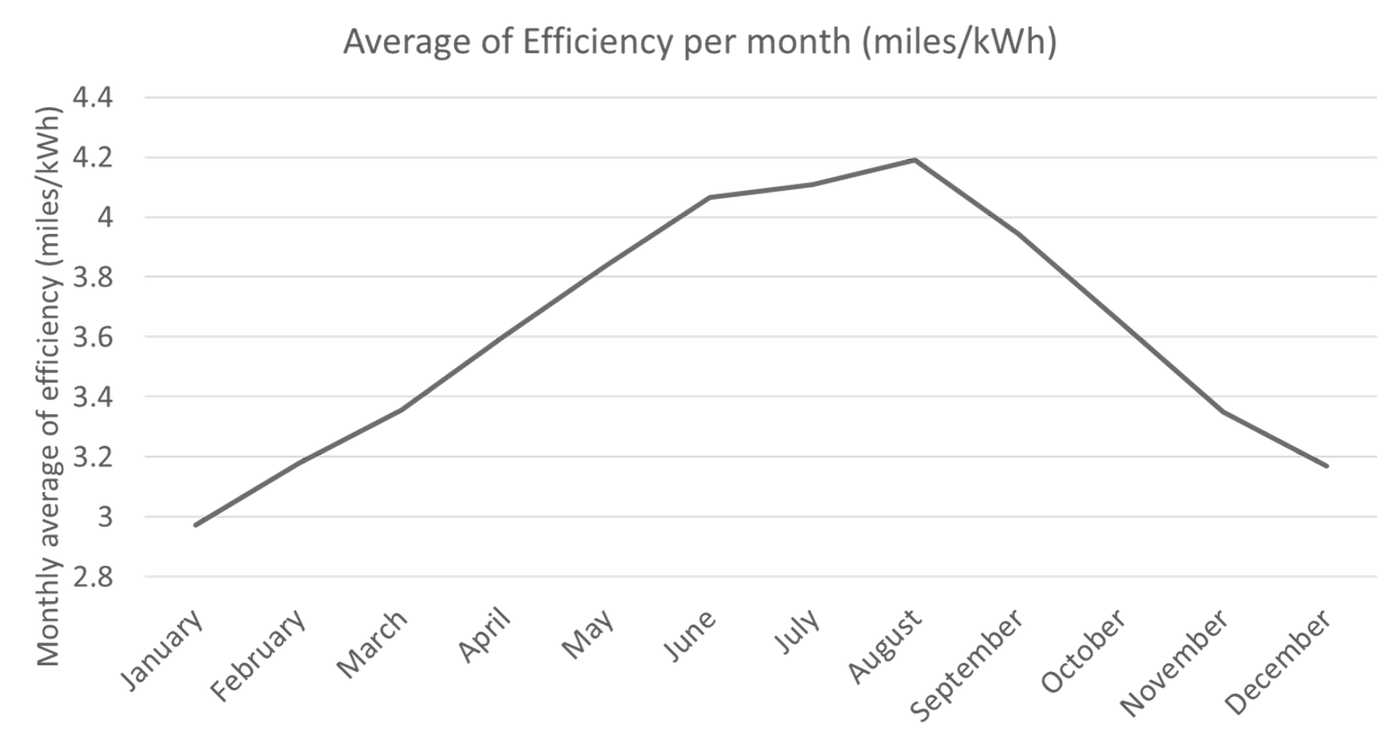
Note: the Y axis does not start at 0.
Efficiency is measured by miles per kWh (instead of miles per gallon). This graph shows the average efficiency of fleet across one year.
The following graph then breaks it down by vehicle.
Efficiency by make/model
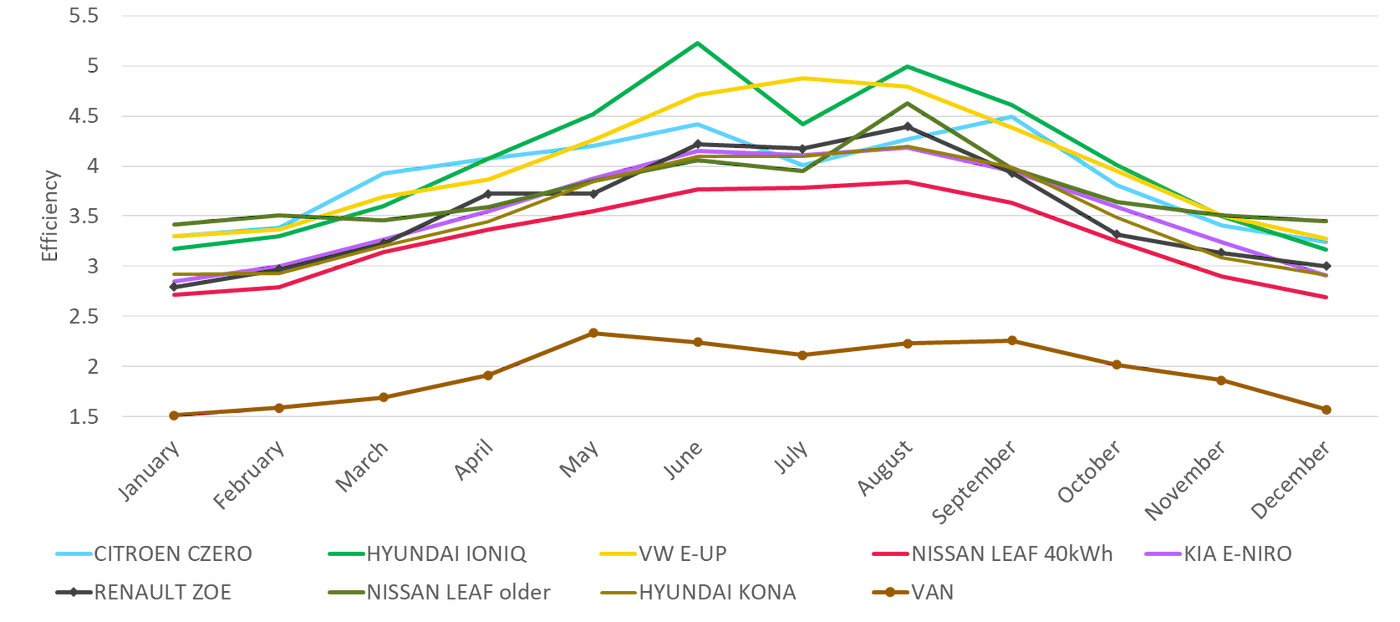
Hyundai Ioniq and Volkswagen e-up! reported the best overall, annual efficiencies.
The lower line was for an electric van. Lower efficiencies being reported but not very surprising given business use so would have been fully laden for most journeys.
Efficiency comparison: Heat pump vs resistive heating
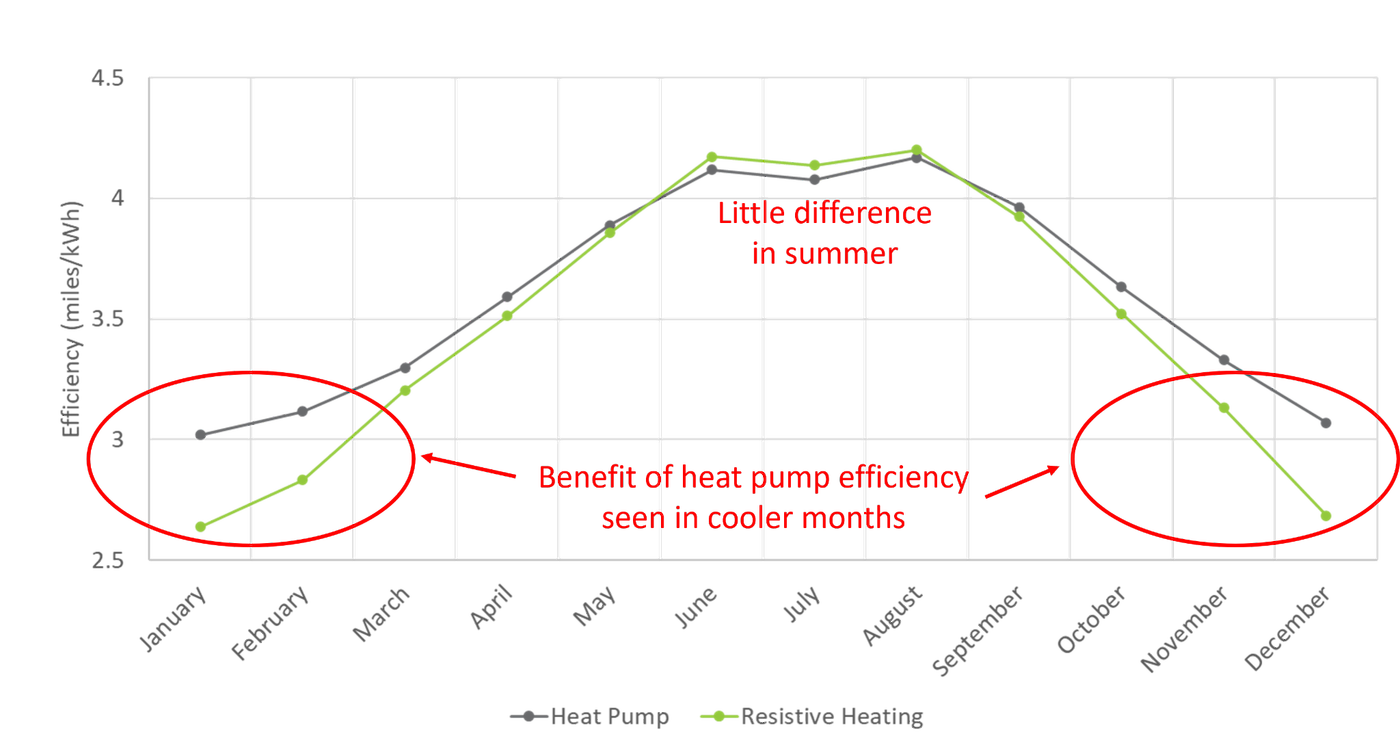
We were very interested to look at the impact of heating on the vehicle. In an EV, you don't have any heat from the engine (wasted heat) to heat the cabin space. So EV manufacturers either provide direct electric heating (resistive heating) or a heat pump (essentially the reverse of an air conditioning unit).
This graph shows an Kia E-Niro 2 (using resistive heating) vs Kia E-Niro 4+ (using a heat pump). An improvement of about 10% efficiency is seen when heat pump in place over the winter months in Orkney.
Driver behaviour
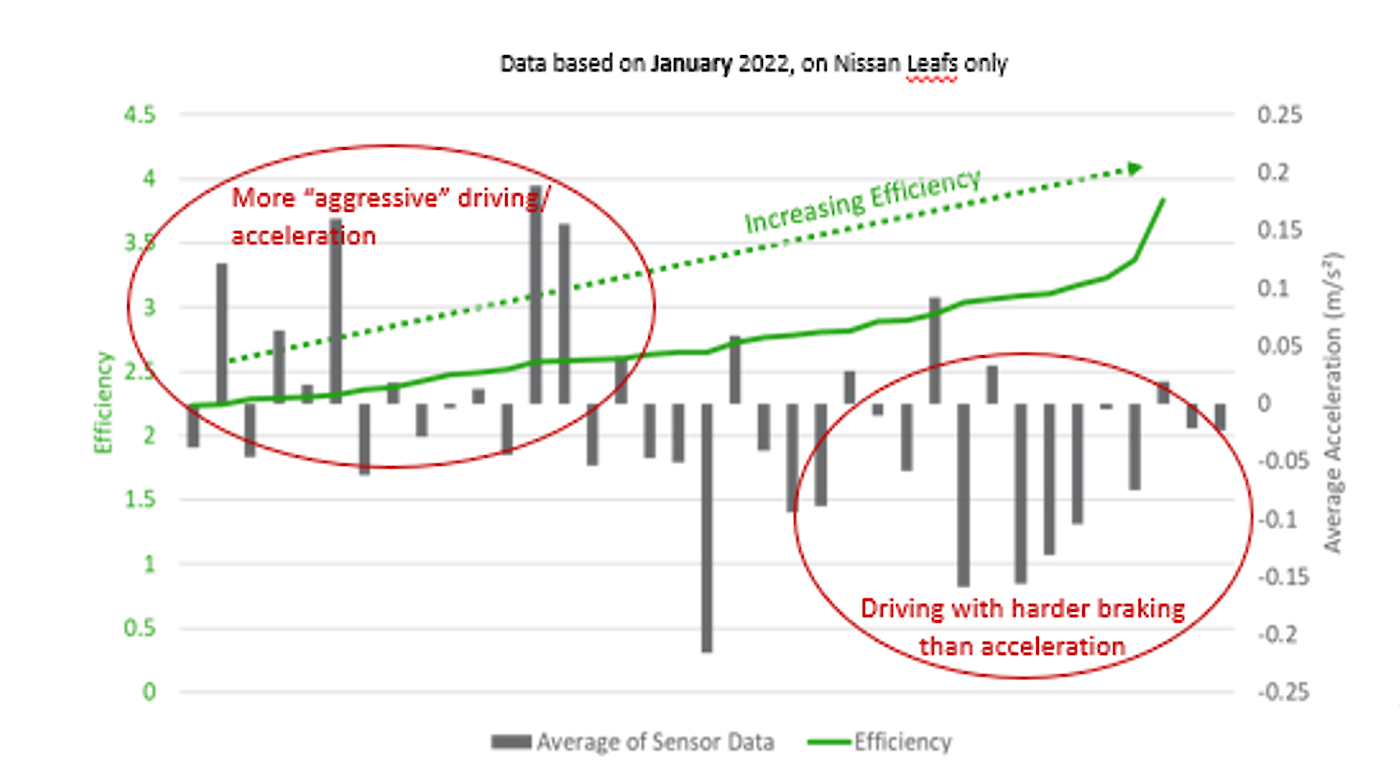
How people drive their vehicles can have an impact on efficiencies, and there is a different way to driving an EV than a convential petrol or diesel car.
The benefit of an EV is that when you brake, you can recharge your battery using regenerative braking.
The left of the graph shows those that have heavier acceleration, making less use of regenerative braking, and thus efficiency reduces.
Interested in leasing an electric vehicle?

